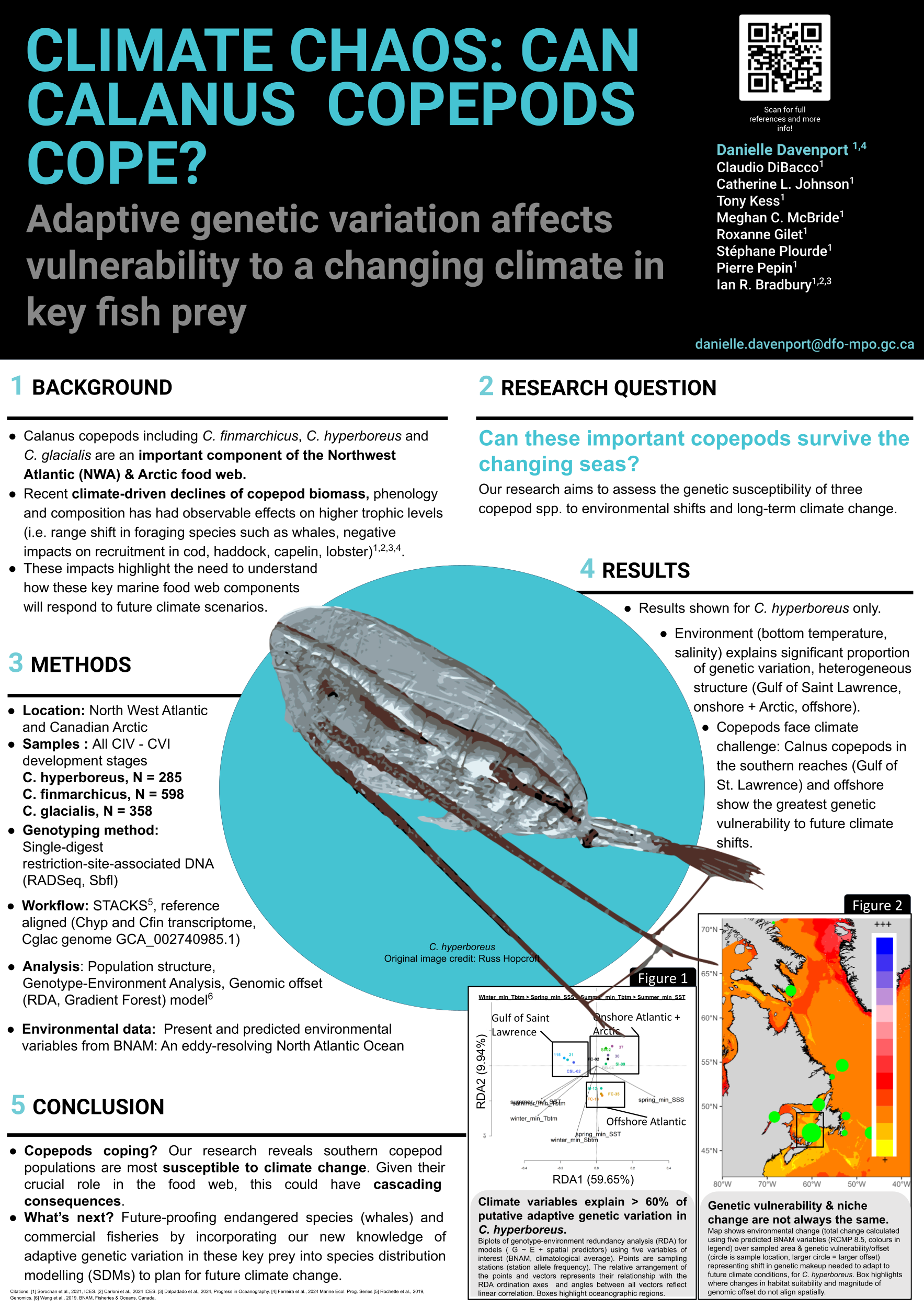Abstract - Climate Chaos: Can Calanus Copepods Cope? Adaptive genetic variation affects vulnerability to a changing climate in key fish prey.
With climate change altering all aspects of marine ecosystems, actionable management strategies to preserve marine ecosystem functioning, commercial fisheries and species at risk require knowledge of how and why species may be vulnerable to future climate change. From an evolutionary perspective, populations evolve differences that provide a fitness advantage under local environmental conditions. Predictions of expected evolutionary responses to future climates via evolutionary pathways can be achieved by studying the environmental drivers of genomic variation and then incorporating genomic information into climate change impact assessments to determine genomic vulnerability. In this study, we present evidence of environmentally mediated intraspecific genetic diversity in two species of Calanus copepod; C. finmarchicus (N=458) and C. hyperboreus (N = 233), both dominant zooplankton species of the North West Atlantic (NWA), and important prey for endangered whales and commercial fish species alike. Using RADseq genotyping and population genomic analysis across a strong environmental gradient, we identify local genetic adaptation, population structure (Atlantic, Arctic and Gulf of Saint Lawrence) and predict spatiotemporal shifts in genomic vulnerability under future climate scenarios with important implications for environmentally associated ecosystem change in the NWA.
Poster, just ctrl + to zoom in!

References
- Ferreira, A. S. A., Langangen, Ø., Yaragina, N. A., Prokopchuk, I. P. & Durant, J. M. How the spatio-temporal overlap of cod, haddock, and capelin larvae affects their recruitment in the Norwegian-Barents Sea system. Marine Ecology Progress Series 734, 79–90 (2024).
- Dalpadado, P. et al. Zooplankton link climate to capelin and polar cod in the Barents Sea. Progress in Oceanography 103302 (2024) doi:10.1016/j.pocean.2024.103302.
- Geoghegan, P. & Shank, B. Diverging phenology of American lobster ( Homarus americanus ) larvae and their zooplankton prey in a warming ocean. ICES Journal of Marine Science 81, 918–928 (2024).
- Sorochan, K. A., Plourde, S., Baumgartner, M. F. & Johnson, C. L. Availability, supply, and aggregation of prey ( Calanus spp.) in foraging areas of the North Atlantic right whale ( Eubalaena glacialis ). ICES Journal of Marine Science 78, 3498–3520 (2021).
- Rochette, N. C., Rivera-Colón, A. G. & Catchen, J. M. Stacks 2: Analytical Methods for Paired-End Sequencing Improve RADseq-Based Population Genomics. http://biorxiv.org/lookup/doi/10.1101/615385 (2019) doi:10.1101/615385.
- Wang, Z. BNAM: An Eddy-Resolving North Atlantic Ocean Model to Support Ocean Monitoring. (Department of Fisheries and Oceans, 2018).